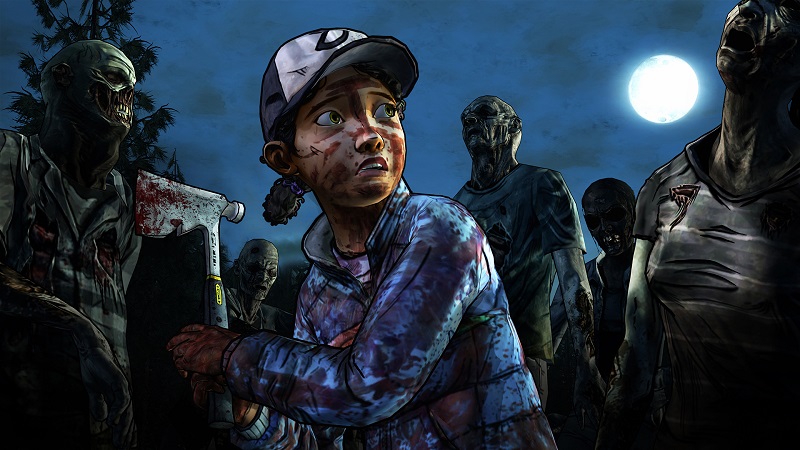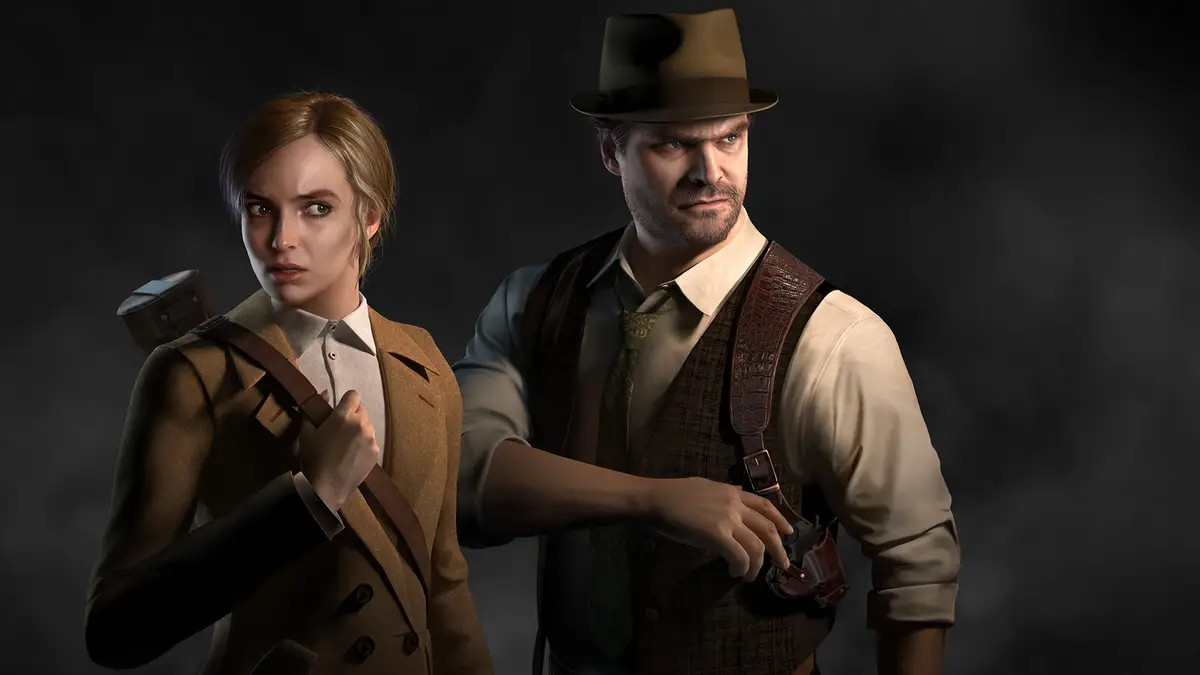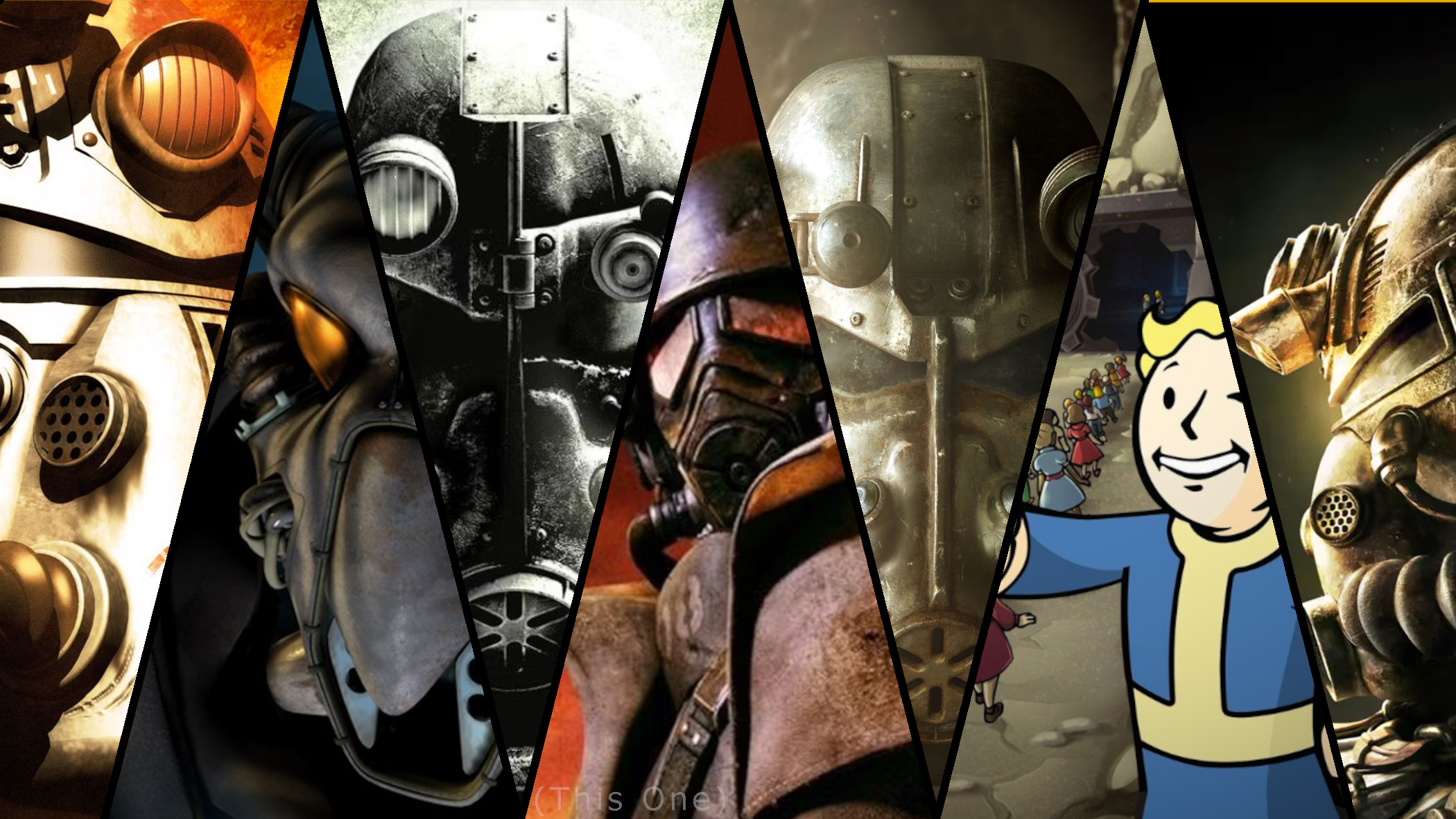The Walking Dead: The Complete Second Season is a third-person episodic, story driven point and click action adventure game available from retail stores and for download from the PlayStation Store for the PS4, PS3 and PS Vita. Telltale Games have gradually become more popular with every game having developed the cult classic Sam and Max seasons to episodic games based upon such well known licensed properties as Jurassic Park, Back to the Future, The Walking Dead and The Wolf Among Us with Telltale’s star rising upon every release which has led to Tales from the Borderlands, Minecraft: Story Mode and even Game of Thrones with certainly a bright future ahead. When The Walking Dead: The Complete First Season originally released in April 2012 on PS3; no one could have predicted the impact it would have had as it went on to win over 90 Game of the Year awards and receive worldwide critical acclaim from the gaming media, but how does the second season shape up in comparison to what has went before it?

Season 2 begins with an emotional recap of the key events from the first season. Following the events of the first season; Clementine is now the lead character in the second season which is not something that would necessarily work in many games to have a child as the lead character, but given how Lee Everett looked after her and taught her responsibly throughout the first season; it works well as it is far more believable due to Clementine now being more independent, knowledgeable and aware of her surroundings. The story begins with a light hearted moment as Christa and Omid who are now looking after Clementine are discussing the name of their unborn child as Omid continues to suggest Omid or Omid Junior for the name, while as Clementine you can join the conversation by suggesting that Omid would be an appropriate or to ask if Omid would be an appropriate name for a girl. However, the pacing of the first season returns rather quickly as it turns the dynamic of the scene on its head with shocking and emotional moments that have repercussions, therefore affecting the flow of the story for the second season and changing the lives of multiple characters forever, while returning to horror elements and scary moments that really plays on the source material superbly.

Season 2 makes multiple nods towards your moral choices and the consequences of your decisions throughout the duration of the five episodes and the 400 Days episode from the first season as you have the ability to import your save file containing all of your decisions from the first season directly into the second season, which is a positive design choice as it affects the story of the second season, while providing continuity to a story that you are capable of influencing.
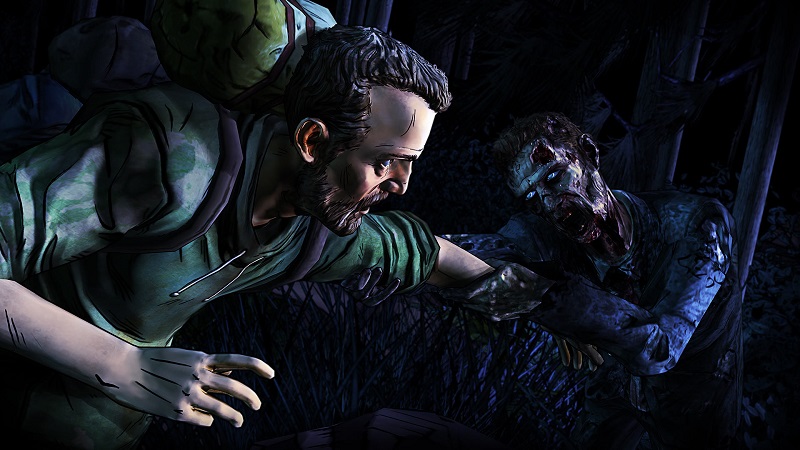
The second season takes what the first season established and kicks it into high gear with even more open and moral choices which can be the difference in taking revenge on a walker or bandit and committing a frighteningly painful action with an ever narrowing window of time to make your decision which could potentially save the life of someone close to Clementine within her group as such moral decisions always draw a powerful emotional response from the player.
The My Choices feature improves upon the feature which was previously displayed at the end of each episode in the first season by providing an entire listing of your choices including the statistical analysis regarding the percentage of players who have made the same choice as you for each moral decision with the feature being directly available from the main menu.
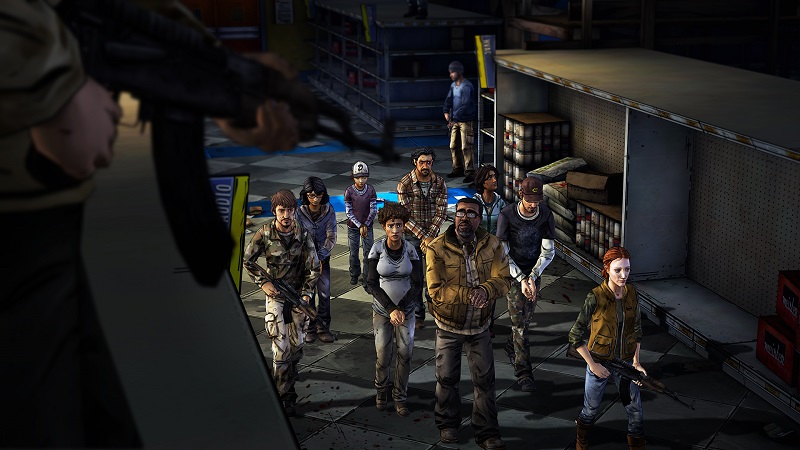
The second season possesses something that was essential to the first season and that is a core cast of characters you become attached to and care for set against the walkers that you will encounter as well as bandits and even group leaders that prefer to make themselves look heroic, while technically using their group to commit to slave labour in return for shelter with a risk of severe punishment if their tasks are not carried out to an enforced standard. The fact that you meet not only walkers, but villainous and ruthless humans along your journey to find a new home makes you care even more for the core group of characters, especially Clementine as her bid for survival becomes harder as a result.
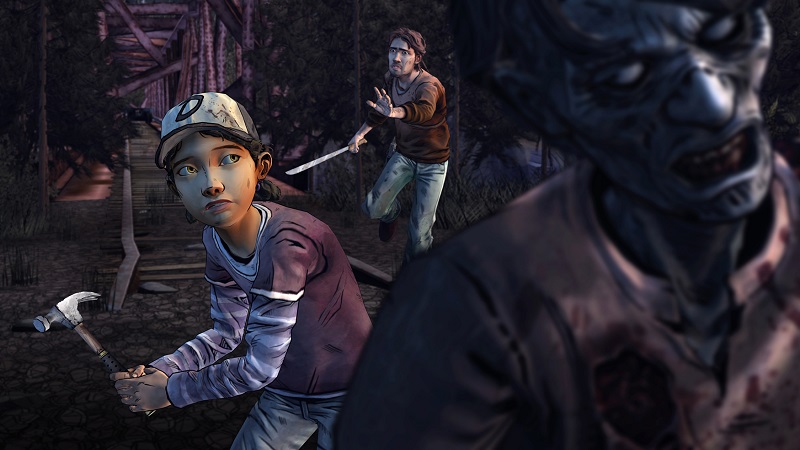
The controls are well mapped to the DualShock 4 controller with various enhancements to refine the control scheme from the first season in regards to differentiating actions, conversations, fighting and running rather than the controls being mapped to the same buttons while only being based upon the context of the scenario you found yourself in as to which button you pressed as was the case with some of the gameplay during the first season. The control scheme of the second season consists of pressing X, triangle, square or O to perform actions, start a conversation with a person in your group or to choose a response in a conversation with the buttons being clearly marked towards the bottom of the screen; pressing R2 to run or perform fight actions when defending yourself; pressing up or down on the d-pad to look at your inventory; mashing certain face buttons such as X, triangle, square or O when in one-on-one encounters with walkers as the buttons are randomly generated each time you play; changing the direction of the left analogue stick to move Clementine around cover in a tight situation or walking around as you explore the environment during your search to find people and supplies; changing the direction of the right analogue stick to move the cursor around the environment for you to investigate and observe certain objects and items of importance as well as deciding who to start or continue a conversation with or even positioning your aim when you are about to defend yourself from a walker; pressing the share button takes you to the share feature menu; and pressing the options button to display the pause menu.
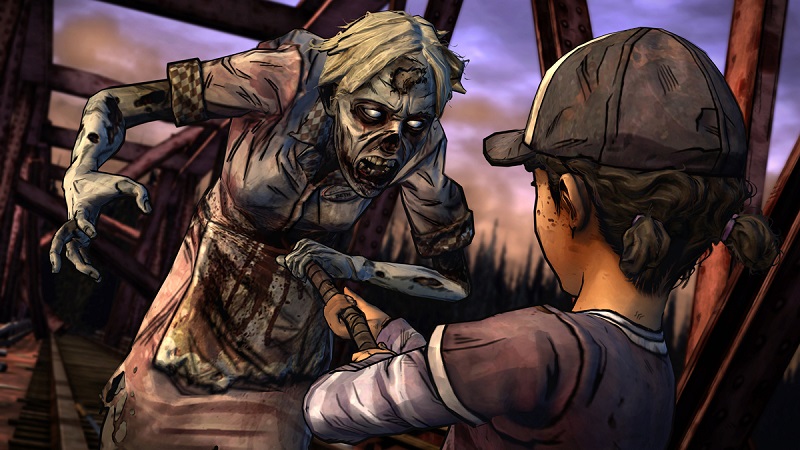
The PS4 version of The Walking Dead: The Complete First Season lacked any touch pad, light bar and vibration functionality and the second season also lacks the same features which is quite surprising as it would have provided some further improvements over the first season. The lack of touch pad implementation is surprising as the Vita’s touch screen control scheme was pretty much perfected as it saw the cursor being replaced with icons and consisted of tapping on an icon to perform a particular action, interact with an object, start a conversation with a person in your group or to choose a response in a conversation, while dragging your finger around the touch screen would move Clementine around cover or exploring the environment as you search for supplies and people, so it is difficult to understand why such functionality could not have made the transition from the Vita to the DualShock 4 controller. The lack of any light bar and vibration implementation is quite surprising as the light bar could have produced an increasingly darker tone of red as a threatening situation looms to work in harmony with the visual effect of the HUD during such occurrences, while the DualShock 4 controller could have vibrated during any bumps and scrapes that Clementine endure along the way as well as the usage of any weapons to fend off walkers.

The graphics and animations have noticeably improved in comparison to the first season as the graphics are even more vibrant as they have the finer details of real world surroundings such as leaves blowing off trees during gusts of wind and the character animations are certainly more fluent, while retaining the same colourful and visually striking comic book cel shaded art style.
The presentation of the game is solid with a great user interface across various menus such as the main menu, my choices menu, settings menu and gameplay menus, although it does not include support for navigation via the right analogue stick and the lack of a touch based user interface via the touch pad is disappointing given the fact of how effective and responsive the touch screen user interface is in the Vita version. The background of the menu screens focuses upon a river that is surrounded by a forest on both sides as the sun shines with the sounds of flowing water, the occasional gust of wind and birds tweeting.

The audio consists of voice-overs, sound effects and music that collectively work in harmony to build layers of the world, relationships and the unfolding stories that you encounter through each episode. Melissa Hutchison has delivered an amazing performance not only across the first season, but also throughout the second season were it is clear that Clementine’s character has evolved in a major way from the little innocent and lost girl at the start of the first season to the more dependable character she gradually became after being taught by Lee in the first season with more experiences in the post-apocalyptic world throughout both seasons and having changed from a sidekick character that you had to care for in the first season to a lead character in the second season. Melissa Hutchison’s performance as Clementine provides a guaranteed emotional response from the player as for instance hearing Clementine crying in pain as she attempts to stitch a dog bite on her arm only to then immediately have to defend herself against a walker is particularly harrowing, while dialogue and reactions to the world around her is delivered with expert precision and if you have played anymore of Telltale Games’ videogames then you will be familiar with Melissa Hutchison’s adaptable voice acting as she has voiced many other characters such as Stinky in the Sax and Max seasons; Trixie Trotter in Back to the Future; and The Wolf Among Us, amongst other videogames. Among a large cast of voice-over artists; other noticeable roles include Michael Madsen voicing William Carver known for Reservoir Dogs and Kill Bill as well as such videogames as Driver 3, Grand Theft Auto 3 and Yakuza, alongside the returning Gavin Hammon who provides another stunning performance as Kenny having already performed voice-overs for Command & Conquer 3: Kane’s Wrath; Infamous; Avatar: The Game; Hitman: Absolution; Tomb Raider; SimCity; The Wolf Among Us; and Skylanders: Trap Team; amongst other videogames.

The sound effects provide an even greater sense of surroundings in comparison to the first season with more of an emphasis on ambient sound effects such as heavy rain and wind as well as the groans of nearby walkers, tweeting of birds and buzzing of flies. The in-game music adds a further layer of tension to scenes in which you will have to defend Clementine from walkers or provides more emotion to dramatic scenes, while the music during the menu screens and at the climax of each episode sets the tone perfectly. The lack of any DualShock 4 speaker implementation is surprising as it could have produced a further layer of atmosphere from sound effects such as nearby walkers and ambient sounds to conversations or music.

The trophy list includes 40 trophies with 15 bronze trophies, 24 silver trophies and 1 gold trophy; however there is no platinum trophy regardless of whether the game is purchased on any PlayStation platform at retail or via digital download which is hard to understand as the first season had a platinum trophy and Telltale’s games usually have a platinum trophy. The trophy list for all five episodes of The Walking Dead: The Complete Second Season is entirely based upon completing each chapter within each episode; resulting in a somewhat easy trophy list in regards to the fact that you will 100% the trophy list if you are able to complete the story with only a single playthrough required. It is estimated that depending upon skill and a good trophy guide to provide some helpful tips that it would take between 10 to 12 hours to 100% the trophy list.

The difficulty curve certainly varies throughout the game as there are some tough one-on-one encounters with walkers to survive, while there are easier areas of the game that require you to scavenge for supplies to maintain Clementine’s energy, so she can stay focused and on the move, alongside other parts of the game that will need you to have conversations with your group to plan your collective escape from multiple difficult situations in order to attempt to preserve the group’s survival. The only settings that are customisable in relation to difficulty levels are for the in-game user interface as you can have a standard setting that allows you to have access to more feedback when you make important moral choices and help in regards to highlighting any areas of interest, while the minimal setting will completely turn off any hints, help and choice notifications. The user interface of the second season is far more refined in comparison to the first season as the cursor is presented with a more colourful and distinctive design as there are icons and colours within the cursor that really differentiate actions from one another rather than mostly being presented in the same way as actions were in the first season which makes for a better experience, while it also provides more control inputs to represent your actions. As was the case with the first season; you will find yourself being required to participate in some button mashing during one-on-one encounters with walkers, but these encounters are made harder by the buttons being randomly generated each time you play. This approach means that it no longer becomes anything related to memorising a certain button sequence and instead it becomes more about fast reflexes to ensure that you survive the encounter, which is an appropriate design choice as it certainly adds more atmosphere and tension to the mix as you are not guaranteed to breeze straight through a one-on-one encounter with a walker.

As is the case with the first season; there are no online leaderboards and no local or online multiplayer, although you would not really expect a multiplayer component in something that is as story and character driven as this game. However, despite there being no online leaderboards; there is a statistical analysis of the decisions that you have made during each episode in comparison to the decisions that everyone else who has played the second season of The Walking Dead has made, which is a positive design choice in the sense that it provides you with an in depth look at if you have made the correct decision or if you were incorrect in the eyes of a certain percentage of people who have played the game. The statistical analysis is broken down into separate categories just as the first season was, but actually covers a wider span of desperate scenarios with such difficult decisions as: forgiveness; friendship; generosity; heroics; honesty; loyalty; mercy; trust; and more besides given the various situations that occur in each episode. Every decision within each episode is clearly defined in the statistical analysis and it is incredibly interesting to see at the end of the eighth chapter of every episode as well as the My Choices feature what percentage of players made the same decisions as you and to also see the percentage of players that disagreed with your choices.
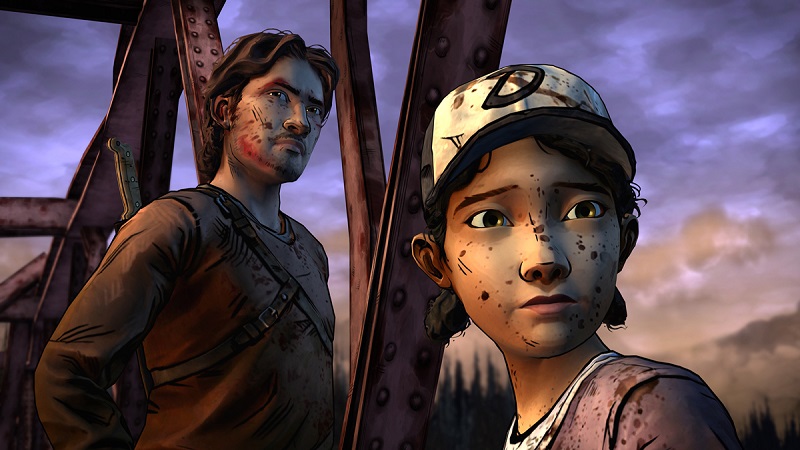
The replayability of The Walking Dead: The Complete Second Season stems from the multiple storylines you can shape by playing the game over the course of multiple playthroughs, while experimenting with different combinations of moral choices to see which direction your decisions will ultimately guide the story regarding which characters will survive that did not previously do so and which characters who survived beforehand that will not survive this time given an alternative moral choice.
Analysis
– Title: The Walking Dead: The Complete Second Season
– Developer: Telltale Games
– Publisher: Telltale Games
– System: PS4
– Format: Retail/PSN Download
– Cross-Buy: No
– Cross-Play: Yes (Save Import for Story Decisions from Season 1 to Season 2)
– Players: 1 (Online Moral Choice Comparisons)
– Hard Drive Space Required: 4.30GB (Version 1.01)
